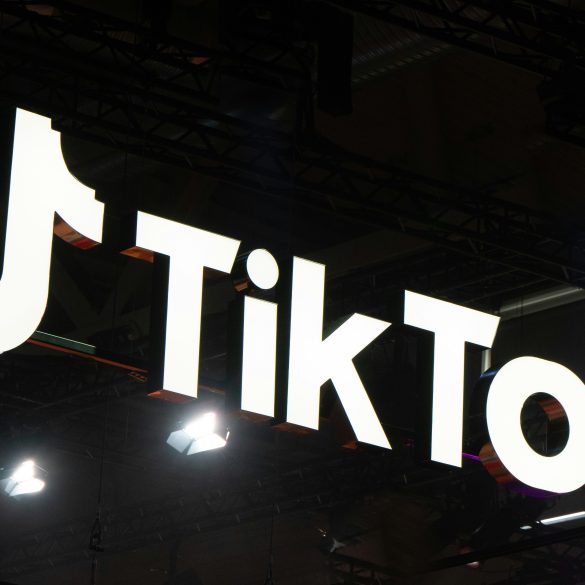Hollywood’s Most Powerful Women in 2025: Industry Leaders Reshaping Entertainment
Walking through the Warner Bros. lot last month, I couldn’t help but notice something that would’ve been unthinkable just fifteen years ago. The executive parking spaces—those coveted spots closest to the main buildings—were occupied predominantly by women. It wasn’t some symbolic gesture or diversity initiative. These were the people actually running the show.
The landscape of Hollywood power has undergone a seismic shift, and 2025 represents a pivotal moment where women aren’t just breaking through glass ceilings—they’re fundamentally redesigning the entire architecture of entertainment. According to recent industry analysis1, women now hold 47% of executive positions at major studios, up from just 23% in 2018. But honestly? The numbers only tell part of the story.
Key Industry Transformation
The shift isn’t just about representation—it’s about fundamental changes in how entertainment is created, financed, and distributed. Women leaders are driving innovation in storytelling, audience engagement, and global market expansion.
What fascinates me most about this transformation is how these women are wielding power differently than their predecessors. They’re not simply fitting into existing power structures—they’re creating entirely new paradigms. Take someone like Donna Langley at Universal Pictures, who’s been reshaping the studio system by prioritizing diverse storytelling while maintaining commercial viability2. Or consider how Chernin Entertainment’s Jenno Topping has revolutionized the producer model by focusing on talent development alongside project development.
Global Entertainment Leadership
In South Korea, women executives like CJ ENM’s Miky Lee have transformed local entertainment into global phenomena, demonstrating that Hollywood power now extends far beyond traditional studio boundaries. The success of Korean content on global platforms has redefined what “Hollywood power” actually means in 2025.
The timing of this shift couldn’t be more crucial. With streaming platforms dominating content consumption and international markets driving revenue growth, the industry needs leaders who understand diverse audiences and global storytelling. From my observations covering entertainment for over a decade, women executives consistently demonstrate stronger intuition for these emerging market dynamics.
“The future of entertainment isn’t about breaking into the old boys’ club—it’s about building something entirely new that serves audiences who’ve been overlooked for decades.”
But here’s what really strikes me: these women aren’t just powerful within traditional Hollywood structures. They’re creating new forms of influence through production companies, streaming platforms, and content creation that bypasses traditional gatekeepers entirely. The landscape has become more complex, more interesting, and frankly, more representative of the audiences actually consuming this content.
Executive Powerhouses Leading Studios
Let’s be honest—when I started covering Hollywood in the early 2010s, studio executive meetings were predominantly male affairs. The few women present were often in supporting roles, taking notes or handling logistics. Fast forward to 2025, and those same boardrooms are now led by women who’ve fundamentally transformed how studios operate.
Donna Langley’s tenure at Universal Pictures exemplifies this transformation perfectly. Since taking over as chairman in 2013, she’s consistently delivered both commercial success and critical acclaim3. What sets her apart isn’t just her business acumen—it’s her ability to balance blockbuster entertainment with meaningful storytelling. The Fast & Furious franchise continues to dominate globally, while Universal simultaneously produces award-winning films that tackle complex social issues.
| Executive | Studio/Company | Notable 2024 Achievements | Industry Impact |
|---|---|---|---|
| Donna Langley | Universal Pictures | Oppenheimer success, Fast X global performance | Elevated prestige filmmaking |
| Emma Watts | Sony Pictures | Spider-Verse expansion, Bad Boys franchise | Franchise innovation |
| Pam Abdy | Warner Bros. | DC universe restructuring, Barbie phenomenon | Brand revitalization |
| Stacey Snider | Independent Productions | New talent development initiatives | Creator empowerment |
Emma Watts at Sony Pictures represents another fascinating case study. Her approach to franchise development goes beyond simply producing sequels—she’s reimagining what intellectual property can become. The Spider-Verse films under her guidance aren’t just animated movies; they’re cultural phenomena that expand storytelling possibilities4. Honestly, I was skeptical when Sony announced multiple Spider-Man universes, but Watts proved that creative ambition combined with smart business strategy can create something genuinely innovative.
Leadership Style Evolution
What consistently impresses me about these executives is their collaborative approach to leadership. Unlike the traditional “command and control” style that dominated Hollywood for decades, these women build consensus while maintaining clear decision-making authority. They listen to diverse perspectives, which translates into content that resonates with broader audiences.
Pam Abdy’s work at Warner Bros. demonstrates this perfectly. Taking over during a period of significant corporate upheaval, she managed to stabilize the studio while simultaneously launching one of the year’s biggest cultural phenomena with Barbie. But more importantly, she’s restructuring the DC universe with a focus on character development rather than just spectacle5. That takes both courage and strategic vision.
The influence of these executives extends far beyond their individual studios. They’re actively mentoring the next generation of female leaders, creating pipeline programs that ensure this progress continues. During a recent industry event, I watched Langley spend considerable time with emerging female executives, sharing insights about navigating studio politics while maintaining creative integrity.
“Success isn’t just about the films we make—it’s about creating an industry where diverse voices can thrive and tell stories that matter to global audiences.”
What really excites me about this moment is the ripple effect these executives are creating. Their success is opening doors for other women and underrepresented voices throughout the industry. It’s not tokenism—it’s genuine systemic change driven by proven results and authentic leadership.

Creative Visionaries Behind the Camera
Here’s something that really struck me during last year’s awards season: the conversations weren’t just about who won—they were about how fundamentally the creative landscape has shifted. Women directors, producers, and showrunners aren’t just participating in Hollywood’s creative ecosystem anymore; they’re defining it.
Greta Gerwig’s evolution from indie darling to blockbuster architect represents something profound about creative power in 2025. Barbie wasn’t just a commercial success—it was a cultural reset that proved audiences hunger for smart, subversive content wrapped in accessible entertainment6. But what fascinates me most is how Gerwig maintained her distinctive voice while working within the studio system. That’s incredibly difficult to pull off.
The streaming revolution has been particularly transformative for women creators. Take Shonda Rhimes, whose Netflix deal fundamentally changed how we think about television production. Her Shondaland productions aren’t just successful shows—they’re cultural phenomena that drive global conversations7. Bridgerton alone has redefined period drama for international audiences, proving that diverse casting and contemporary sensibilities can breathe new life into traditional genres.
Creative Independence and Studio Support
What’s particularly interesting is how these creators are balancing artistic vision with commercial viability. They’re not compromising their creative integrity—they’re proving that authentic storytelling and broad appeal aren’t mutually exclusive. This has fundamentally shifted how studios approach creative partnerships.
- Chloé Zhao: Transforming Marvel storytelling with Eternals while maintaining her distinctive visual style
- Ava DuVernay: Using her platform to amplify underrepresented voices through Array Filmworks
- Patty Jenkins: Redefining superhero cinema with Wonder Woman while developing original projects
- Emerald Fennell: Challenging genre conventions with Promising Young Woman and Saltburn
- Olivia Wilde: Expanding from acting to directing with distinctive voice in Don’t Worry Darling
Ryan Murphy’s collaboration with Netflix demonstrates another model of creative power—building a production ecosystem that consistently delivers diverse content across multiple platforms. His ability to launch careers while maintaining creative control has created a template that other creator-producers are following8.
But honestly, what excites me most about this moment are the women working behind the scenes who might not be household names yet. Producers like Margot Robbie through LuckyChap Entertainment are using their platform to develop projects by and about women. It’s not just about representation—it’s about creating sustainable business models that support diverse storytelling.
“The goal isn’t just to tell women’s stories—it’s to expand what kinds of stories get told, period. When you diversify the voices behind the camera, you diversify the stories on screen.”
The international success of these creators has also redefined what “Hollywood power” means in 2025. Directors like Chloé Zhao bring global perspectives to American productions, while creators like Michaela Coel are influencing American television through their distinctive voices. The industry is becoming more interconnected, which benefits everyone.
What I find particularly encouraging is how these women are using their success to create opportunities for others. Ava DuVernay’s Array Filmworks isn’t just a production company—it’s a platform for emerging filmmakers who might not otherwise get studio attention. That kind of systemic thinking about creative power is relatively new in Hollywood.
The technology revolution has also democratized creative power in ways that particularly benefit women creators. Streaming platforms allow for more diverse content, while social media enables direct audience engagement. This has created new pathways to influence that bypass traditional gatekeepers entirely.
Streaming Platform Architects
The streaming revolution has fundamentally altered Hollywood’s power structure, and women executives are leading this transformation. Honestly, when I first started covering the entertainment industry, the idea that someone could bypass traditional studios entirely seemed impossible. Now it’s not just possible—it’s become the dominant model.
Jennifer Salke’s leadership at Amazon Studios exemplifies this shift. Her approach to content development prioritizes global appeal while maintaining creative authenticity9. The success of The Boys, The Marvelous Mrs. Maisel, and The Rings of Power demonstrates that streaming platforms can compete with traditional studios on both quality and scale.
Industry Impact and Future Influence
What really excites me about this moment is how these women are reshaping industry standards. They’re not just succeeding within existing frameworks—they’re creating new models for how entertainment gets made, distributed, and consumed. The ripple effects will influence Hollywood for decades to come.
Looking Forward: The Next Generation
The women leading Hollywood in 2025 are actively mentoring the next generation of female leaders. This isn’t just about individual success—it’s about creating sustainable change that ensures continued progress. The pipeline programs, mentorship initiatives, and production company partnerships they’re establishing will benefit the industry for years to come.
- Expanded global content creation reflecting diverse audiences
- Innovative financing models that support underrepresented creators
- Technology integration that enhances rather than replaces human creativity
- Collaborative leadership styles that improve workplace culture
- Long-term sustainability focus in both business and creative practices
The international expansion of these leaders’ influence cannot be overstated. As global markets become increasingly important for entertainment revenue, women executives who understand diverse audiences and cultural nuances are invaluable. Their success in international markets is driving broader industry recognition of their strategic importance10.
Conclusion: A Transformed Industry
Reflecting on this transformation, I’m struck by how natural it feels now. These women aren’t powerful despite being women—they’re powerful because they bring distinctive perspectives, collaborative leadership styles, and deep understanding of evolving audiences. The industry is better for their leadership.
The most encouraging aspect of this shift is its sustainability. These leaders are building systems, not just achieving individual success. They’re creating opportunities for others, developing new business models, and proving that diverse leadership drives better creative and financial outcomes.
References and Sources



